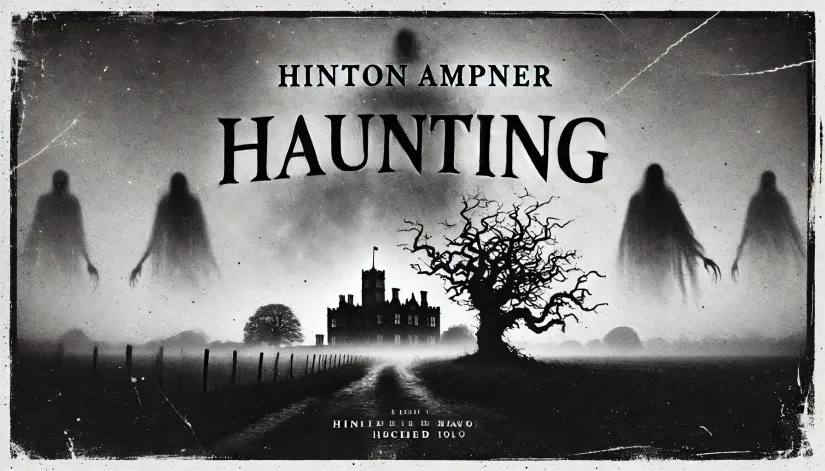When it comes to haunted houses, Hinton Ampner is right there—at the top of the list!
This historic mansion has witnessed centuries of change. It’s more than just a beautiful old building. It’s a proud piece of English heritage. Today, it’s managed by the National Trust, but let me tell you—it’s not the manicured gardens or the Georgian architecture that draws people in. Nope, it’s something way stranger—something supernatural.
Do you want to hear something even weirder? The house you see today isn’t the one built around 1540. That original house? It was demolished in 1793 after allegedly becoming the epicenter of some seriously freaky hauntings—poltergeist manifestations that got so insane a well-respected family had to pack up and leave everything behind.
Why would they do that? What could be so terrifying to make them abandon their home? Did they think tearing it down might break the curse or at least bury whatever evil was haunting those walls?
We may never know, but it sure makes you wonder. The house that stands there today was built in its place, and while it looks mostly peaceful now, the hauntings haven’t stopped…
In this article:
Hinton Ampner History
What better way to start our story than by going back to the origins, back to the beginning of Hinton Ampner’s mysterious past. There are lots of creepy stories around this place. Even from the moment it was built, something was always off.

Early Origins
Hinton Ampner’s history dates back to the 1540s when the first manor was built. The house was impressive. Tall chimneys rising against the sky. Gabled roofs with that classic Tudor charm. A sturdy timber framework that made it both elegant and reliable.
Sadly, we don’t know much about the estate’s first owners. However, I think it’s safe to assume they were likely tied to prominent Tudor families—people who influenced the local economy.
Why is that? Because back in those days, Hampshire was a patchwork of farmlands and small villages. People were poor. Even those with some standing couldn’t really afford much. So, a family wealthy enough to afford such an estate was probably tied to the monarchy in one way or another.
Ownership Timeline
In May 1597, the Stewkeley family officially took over Hinton Ampner. They were rich and powerful. So, the estate prospered, too. The new owners made some significant contributions. Expanded the estate. Developed its gardens.
The Stewkeleys were also influential in local politics. For many years, Hinton Amper hosted grand events, feasts, balls, you name it. But behind all the success, rumors began to spread—something felt off about the Stewkeleys. Some even whispered about strange disappearances (including some of the servants).
In April 1702, the Stawell family took ownership of Hinton Ampner. Sir Edward Stawell led major renovations, updating the manor to reflect contemporary tastes. Records from 1705 suggest they added a new wing to the manor, expanded the gardens further, and made significant structural improvements.
Their tenure at Hinton Ampner wasn’t just marked by renovations. They were also involved in major regional events, such as the War of the Spanish Succession (1701–1714). What was their role? Well, Sir Edward Stawell organized local militia and managed resources to support the war effort.
Related: Stockwell Poltergeist: How One Servant Fooled Everyone
Nevertheless, we don’t know if the mansion was used as a place to treat injured soldiers (which was quite common back then) or if it played any significant role in the events.
The Stawells lived at Hinton Ampner until 1760 when the property changed hands once again.
In June 1765, Mary Ricketts and her family acquired the property. This transition set the stage for one of England’s most notorious hauntings.
After the Ricketts moved in, they also worked on revamping the manor’s interior. Nothing major. Just minor changes. Enough to suit their needs.
At first, things were relatively normal. However, strange and inexplicable events overshadowed their lives a few months after they finished the renovations.
What’s intriguing here is why the Ricketts? Why did none of the previous families report any significant paranormal manifestations? Could it be because whatever event triggered the haunting happened just before the Ricketts moved in? Anyway, more about what the Ricketts experienced later.
After the Ricketts left in August 1769, the estate was bought and sold several times throughout the late 18th and early 19th centuries.
Interestingly, in 1793, the original manor was demolished—some say due to its deteriorating condition, while others hint at an attempt to erase the memory of the hauntings. Either way, in its place, a new Georgian-style house was built.
Things were relatively quiet over the next century or so.
In March 1935, Ralph Dutton (the 8th Baron Sherborne) inherited the new Hinton Ampner. His vision was to restore its Georgian grandeur, and he undertook several major restoration projects to bring the estate back to life. Tragically, a strange fire on April 3, 1960, destroyed much of the house.
Dutton had to start over. Rebuild everything from the ground up. But, after years of hard work (and a lot of money spent), he restored the estate to its original glory.
In 1985, Dutton donated Hinton Ampner to the National Trust.
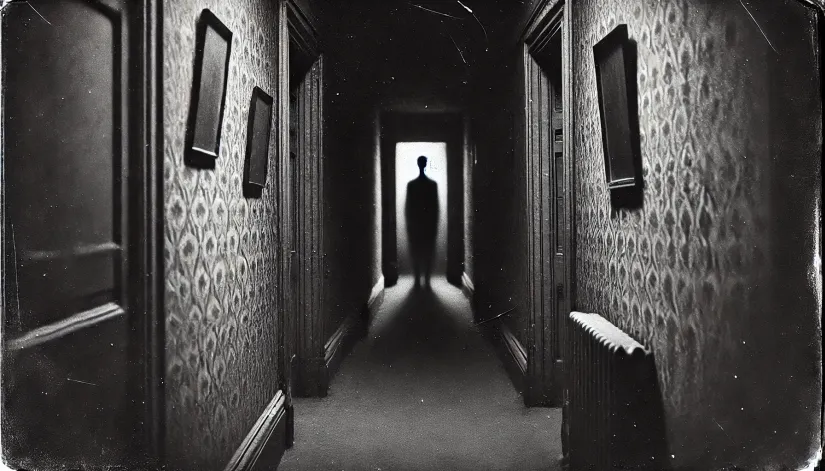
The Hinton Ampner Haunting
Now, let’s talk about the haunting—the real reason Hinton Ampner captures the imagination of so many.
The First Signs of a Haunting
As mentioned, in June 1765, Mary Ricketts and her family moved into the manor. The family consisted of Mary, her husband (William Henry Ricketts), and their children. However, William (a plantation owner) spent most of his time in Jamaica, leaving Mary to manage the household.
Related: Is Ectoplasm Real? Real Ghost Evidence or Mere Trickery?
At first, everything appeared perfectly ordinary. Hinton Ampner was a beautiful, tranquil estate. The family was happy with how the house looked, so they only made minor updates and renovations to suit their tastes.
Sadly, things didn’t stay peaceful for long.
The first signs of haunting appeared in late autumn of 1765. Strange noises. Inexplicable footsteps. Doors slamming—especially during the night. At first, the Ricketts dismissed the disturbances. They likely blamed the wind, the old timber settling, or the usual creaks of an aging house.
But soon, there was no ignoring it.
The first alleged ghost was seen by Mary herself in December 1765. Just a strange silhouette that seemed to appear and vanish at will—often in the middle of the night, drifting through rooms without making a sound.
More often than not, Mary saw this ghost near the main staircase and in the older parts of the house.
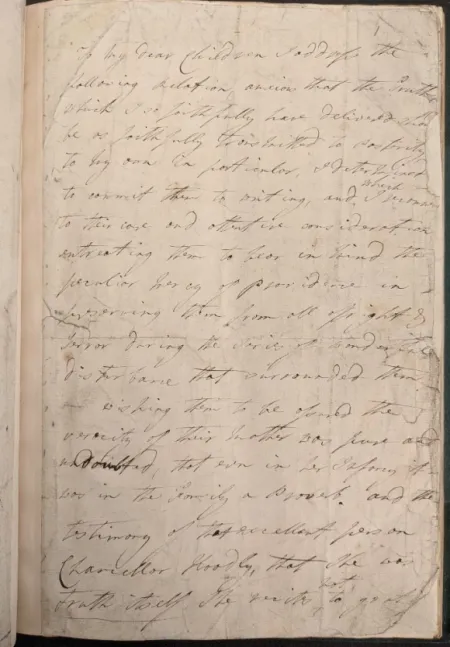
From Hauntings to Poltergeist
The whole situation escalated quickly. And soon, it wasn’t just about a few bumps in the night.
By early 1766, things got way more intense.
Objects moved on their own—furniture shifting, household items falling without any reason, sudden drops in temperature, whispers, and windows rattling violently at all hours. There are even records from March 1766 mentioning glass shattering in several rooms.
Letters from Mary Ricketts, dated April and June 1766, describe sleepless nights, strange footsteps echoing through the halls, and children too scared to stay in their rooms after dark:
“[…] soon after we were settled at Hinton I frequently heard noises in the night, as of people shutting, or rather slapping doors with vehemence.”
By this time, most of the servants had already left. We know this because of a journal kept by one of the servants. According to entries written between April and August 1766, things in the house got really bad.
Related: Do Residual Hauntings Fade Over Time? Why Some Ghosts Disappear
Mary herself wrote about feeling powerless, like she could do nothing to fight against whatever had invaded their home. She noted in her diary:
“There is no reprieve, no sanctuary in these halls anymore.”
In 1769, William traveled to Jamaica without his wife and children, leaving them at Hinton Ampner. It was during this absence that the disturbances became more terrifying and frequent.
Mary writes:
“I had frequently observed in a favourite cat that was usually in the parlour with me, and when sitting on table or chair with accustomed unconcern she would suddenly slink down as if struck with the greatest terror, conceal herself under my chair, and put her head close to my feet. […] The servants gave the same account of a spaniel that lived in the house.”
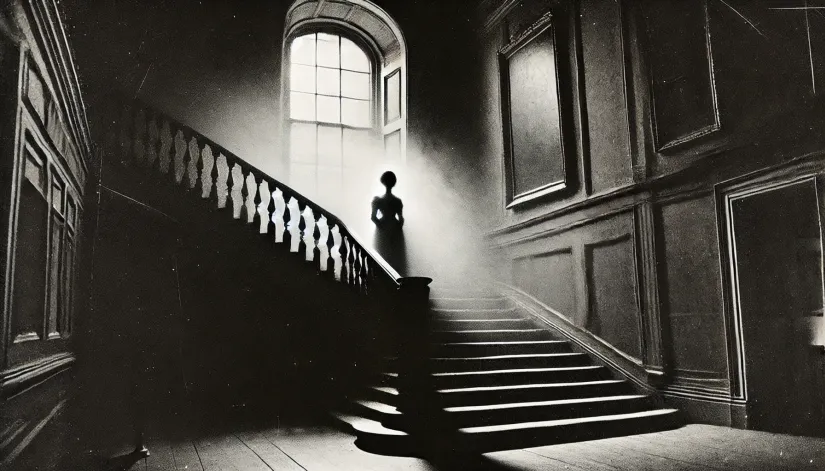
Witness Accounts
Mary and the servants weren’t the only ones to notice that something wasn’t quite right. William, the kids, and even visitors to Hinton Ampner experienced the bizarre phenomena.
One notable witness was Mary’s brother, Richard Streatfield, who stayed at the manor during the winter of 1766. In his letters to friends, he described seeing a shadowy figure in the corridors and hearing footsteps during the night.
Related: Who is the Brown Lady of Raynham Hall Haunting Visitors?
Another account comes from a family friend, Reverend Thomas Fletcher, who visited in March 1766. He wrote in his diary about witnessing a chair move across the room by itself and hearing what sounded like faint voices coming from an empty hallway.
One visitor’s letter (written by an acquaintance named Mr. George Talbot in June 1766) describes seeing a figure standing at the end of a hallway, only for it to vanish as he approached.
The Aftermath
The Ricketts family tried everything to put an end to the disturbances. They consulted local clergy, hoping that perhaps a blessing might rid them of whatever haunted their home. They even sought advice from neighbors, who offered everything from practical solutions to superstitious rituals.
But nothing worked.
The haunting persisted, and eventually, the Ricketts family made a heart-wrenching decision—they had to leave. They abandoned Hinton Ampner in August 1769.
After they left, Mary Ricketts and her family moved to a nearby property, hoping to find peace and stability away from the troubled manor. However, Mary continued to write about her experiences for years afterward, recounting the horrors they faced in letters later passed through the family.
What happened to Hinton Ampner? As mentioned above, the original house was demolished in 1793. Records suggest that part of the reason was its deteriorating condition—years of neglect had left it in poor shape.
However, there are also hints that the demolition was caused by superstition and an attempt to rid the land of whatever evil was believed to linger there.
Theories and Interpretations
So that’s pretty much what happened in the Hinton Ampner. But what could have caused it?
Well, I’ve put together these theories based on my research and the documents I could find—like the journals and Mary’s letters. They’re my best attempt at making sense of what happened at Hinton Ampner.
However, we must also accept that we might never know the whole truth.
Supernatural Explanations
Let’s start with the supernatural theories. Given what allegedly happened at Hinton Ampner, I feel that these theories may fit well into the general picture.
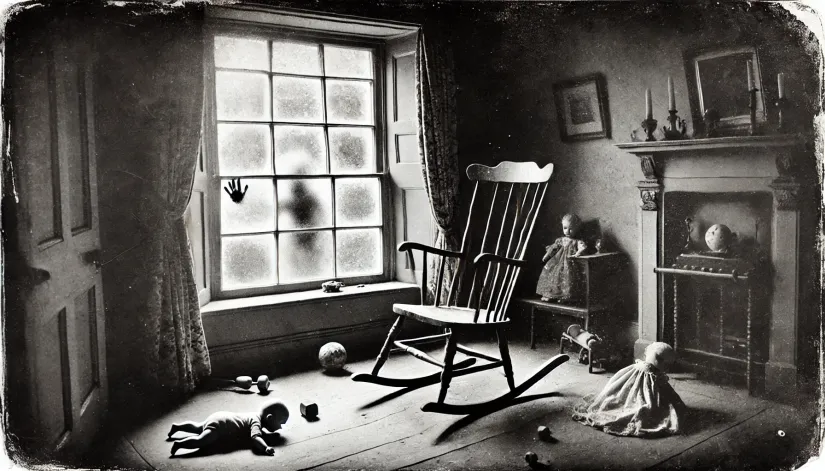
Poltergeist Activity
Alright, so if the historical records are accurate (and it’s a big “if”), I think the strange happenings at Hinton Ampner could very well have been caused by poltergeist activity.
Why a poltergeist vs. a simple haunting or residual ghost? Simple. Because a poltergeist (often characterized by a noisy or disruptive spirit) typically shows up through severe physical disturbances—objects moving on their own, loud noises, and even violent outbursts.
Based on my research, this case checks many of the classic poltergeist boxes: objects shifting for no reason, unexplained knocks, sudden cold spots, and that eerie sensation of being watched. All the usual signs.
And here’s something even creepier—objects like chairs and candlesticks weren’t just moving. They were reportedly hurled across rooms. That sort of intensity matches other well-documented poltergeist cases from around the same time.
You May Also Like: Mackenzie Poltergeist: Is Greyfriars the World’s Most Haunted Graveyard?
Take the Epworth Rectory haunting (1716-1717), for instance. It also had loud bangs, moving objects, and sudden temperature drops.
Another similar story? The haunting at Tedworth House (1661-1663). This one involved loud drumming noises, strange knocks, and objects being thrown around, too.
Just like Hinton Ampner, the disturbances at Tedworth were relentless. And despite multiple attempts to end it, they just kept happening, leaving the residents terrified and completely baffled.
While Hinton Ampner may not have had the extreme physical harm seen in other cases, it did have escalating disturbances and relentless activity that made the family’s life unbearable.
Restless Spirits (or a Curse)
How about a curse on the estate or perhaps the lingering spirits of those who lived—or died—there before? I think that’s also a possibility. In fact, this is another theory I’ve considered.
In fact, there are some local legends in Hampshire about tragic deaths, disappearances, and other unresolved past events. One example is the story of a tenant farmer who lived on the property in the early 17th century. He met a tragic and violent end which might have left a dark mark on the estate.
One version of the story even suggests that this farmer cursed the land in his dying breath, dooming anyone who lived there afterward.
We also can’t ignore the fact that, in some cases, curses can bind spirits to a specific place. Basically, a curse can force spirits to stay until their business is complete (or until justice is served). This might explain why the hauntings seemed so territorial—like something, or someone, just wasn’t willing to let go of Hinton Ampner.
Rational Explanations
Of course, we can’t just focus on the paranormal side of things and ignore any rational explanations—that’s not how a proper paranormal investigation works. Sometimes, the more mundane explanations are just as important to consider.
Natural Causes
Speaking of rational explanations, not everyone buys into the idea that Hinton Ampner was haunted by spirits or poltergeists—some folks think there’s a much simpler explanation. And honestly, I think it’s only fair to consider all possibilities.
One natural cause for what happened at Hinton Ampner? Maybe it was just structural issues. Old wooden beams expanding and contracting can easily cause loud bangs or creaks, especially in a house as ancient as this one.
Drafts could have moved through the house too, making doors slam on their own or creating those creepy footsteps everyone talked about. Just typical old-house stuff.
We could also blame some of the “manifestations” on the underground water systems. Sometimes, these systems create vibrations or noises that travel through old buildings, giving off that feeling of a ghost being around.
Psychological Factors
And let’s not forget about the psychological side of things. Living in an old, isolated house—especially one rumored to be haunted—can mess with your head. I think stress, fear, and even the power of suggestion played a considerable role here.
If one person believed they saw something unusual, it’s easy to see how that fear could spread to everyone else. Groupthink might have made the Ricketts family interpret perfectly natural events as something supernatural.
Plus, back in those days, people knew so little about mental health or the effects of prolonged stress. It’s very possible that the emotional strain made everything seem far worse than it really was.
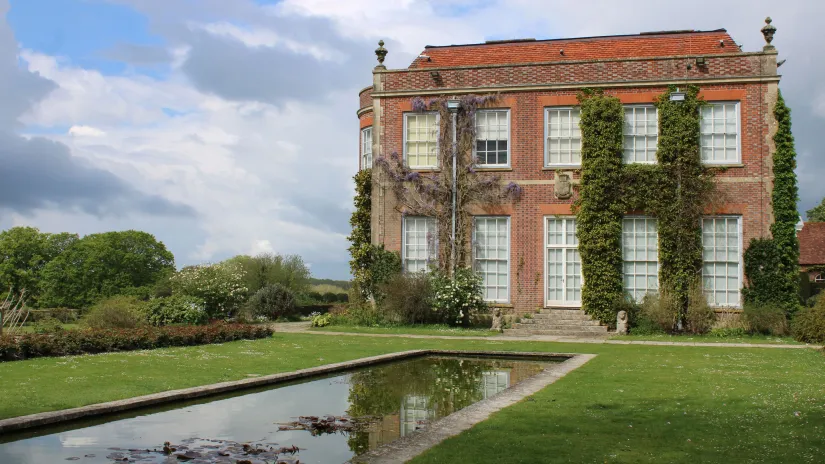
Hinton Ampner Today
The haunting of Hinton Ampner didn’t just stay within the manor’s walls—it spilled into literature and media, too. Some even say it inspired Henry James when he wrote “The Turn of the Screw,” a classic ghost story featuring a haunted estate and that creeping sense of dread.
The haunting has also appeared in documentaries, books, and TV shows that explore England’s most haunted places.
For example, the BBC’s Countryfile aired an episode titled “Archaeology at Hinton Ampner” on March 24, 2024. In it, host Anita Rani explored the estate’s rich history, including its supernatural tales. Another example is the Dark Histories podcast, which dedicated an episode to “The Haunting of Hinton Ampner.”
Today, Hinton Ampner is under the careful watch of the National Trust. Those curious about its history can visit the mansion and even check out the perfectly preserved artifacts and documents that tell the story of both the old Tudor manor and the later Georgian house—including its haunted past.
The whole experience is more than just a history lesson. You can hear firsthand accounts of the infamous Hinton Ampner haunting, see where the strange occurrences took place, and learn about the theories behind them.
And if you’re lucky, you might even hear one of those legendary whispers yourself…

